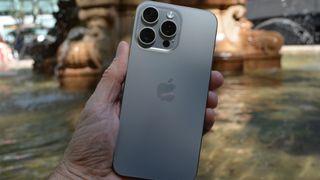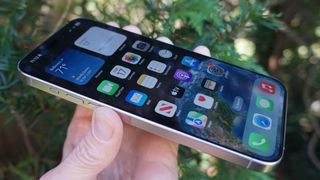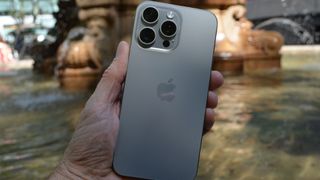We’re just weeks away from what is expected to be a bundle of exciting new iPhone 16 smartphones and, if the rumors hold true, I may be able to make a switch.
I’m not talking about switching from Android to iOS. As a smartphone reviewer, I’m in the habit of carrying multiple phones of all stripes at once. But only one phone gets my personal number and is my primary device.
For the better part of a year, that’s been an iPhone 15 Pro Max. Carrying a 6.7-inch handset is a big deal for me. While I appreciate that giant Super Retina XDR display, I’ve always thought it was too large for my day-to-day.
Up until last year’s iPhone 15 lineup, there was no compelling reason for me to choose a Pro Max version over a Pro. They were essentially the same device aside from screen size (some extra pixels, but not a higher resolution) and a larger battery. The latter was usually a wash, though, because a larger screen eats battery life more quickly, so battery life on Pro and Pro Max models usually ended up close to the same.
With the 6.3-inch iPhone 15 Pro and iPhone 15 Pro Max, Apple chose to include the tetraprism technology in only its largest and most expensive phone, the iPhone 15 Pro Max. Tetraprism technology is a bit like the periscope technology Samsung used to put 10X optical zoom in the Samsung Galaxy S23 Ultra. However, tetraprism doesn’t combine a prism with that much distance to the sensor. Instead, it bounces light from the lens back and forth through a prism, adding virtual distance, and increasing the optical zoom before it reaches the sensor. In the case of the iPhone 15 Pro Max, that means 5X optical zoom.

Size matters
As an amateur photographer, I believe in optical zoom. Digital zoom is fun and sometimes useful but for clarity and visual truth, you go with optical. When paired with a decent 12MP or higher sensor and powerful computational image processing, strong optical zoom on a smartphone camera can produce impressive results: photos that will, unlike digital and AI-enhanced zoom, hold up to some scrutiny.
I’d been spoiled by Samsung’s 10X zoom, despite Samsung pairing it with a somewhat middling sensor. Subsequent Ultras reduced the optical zoom power to 5X but boosted the sensor size significantly, which means a lot more detail and the ability to pluck out objects in the distance as if you have a larger zoom.
In any case, when you have 10X optical zoom, it’s hard to go back to 3X. So I switched to the iPhone 15 Pro Max. The larger and heavier (221 grams versus the 15 Pro’s 187g) device did take some getting used to – it just barely fits in most jean pockets – but I adjusted.

An easier choice
As we approach the expected September 10 iPhone 16 line launch date, I realize I may have a new choice to make.
Recent rumors point to Apple taking the LG Inoteck Tetraprism lens first used on the iPhone 15 Pro Max and putting it in both the iPhone 16 Pro Max and the iPhone 16 Pro. There’s no indication that Apple will up the optical distance beyond 5X, but if it combines that with a 48MP sensor using pixel binning (meaning 4 pixels combined for each one on the final photo) it could have enough resolution to act like a 10X optical zoom.
Naturally, the addition of a more powerful zoom on the iPhone 16 Pro means that it should have parity with the iPhone 16 Pro Max on every feature except for screen size and battery. In that case, the choice may be simple: I switch back to the smaller phone and give my pocket a rest.
On the other hand, what if the iPhone 16 Pro Max is super thin? … and I do love that larger screen …
You might also like
Services Marketplace – Listings, Bookings & Reviews
